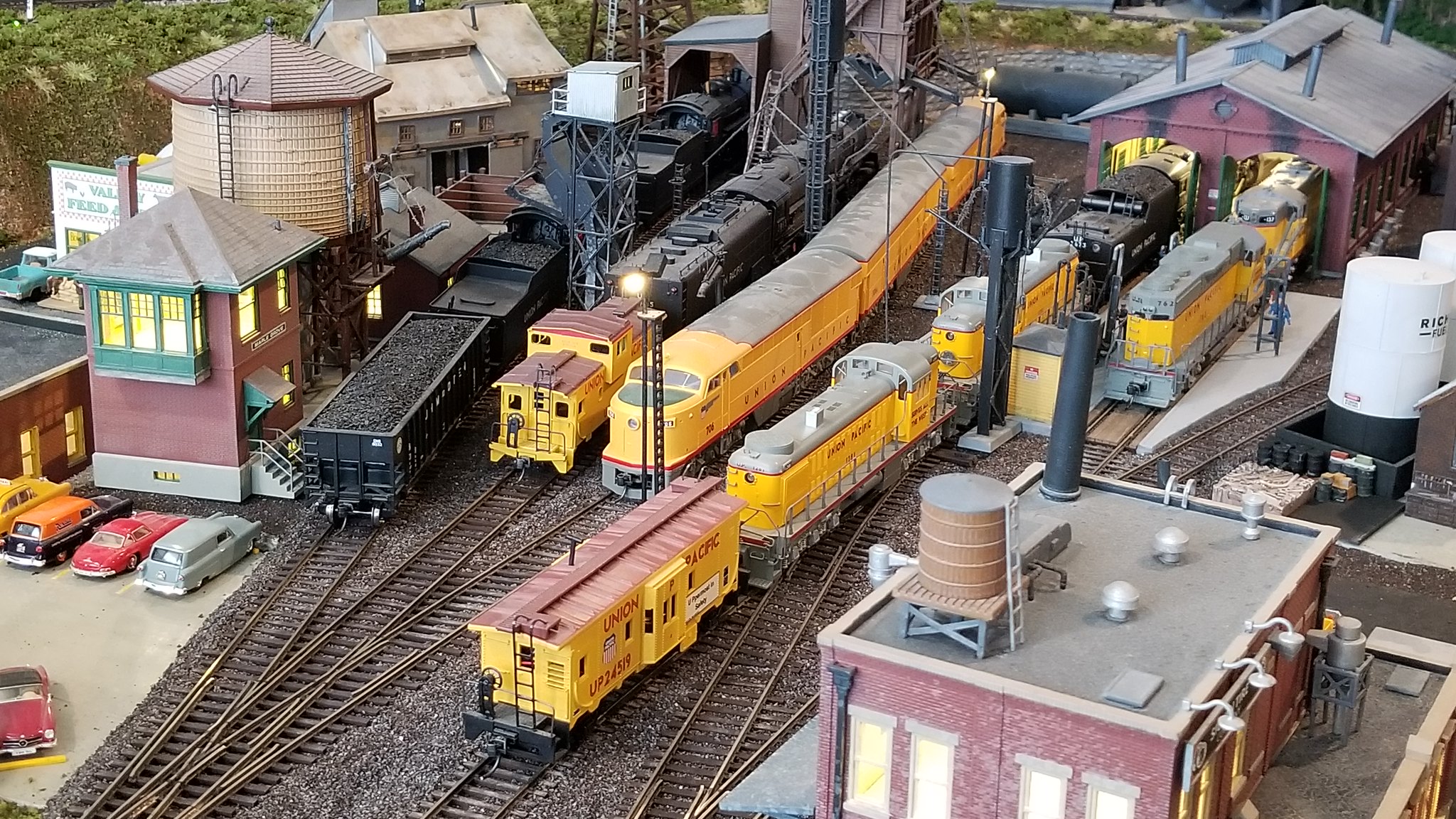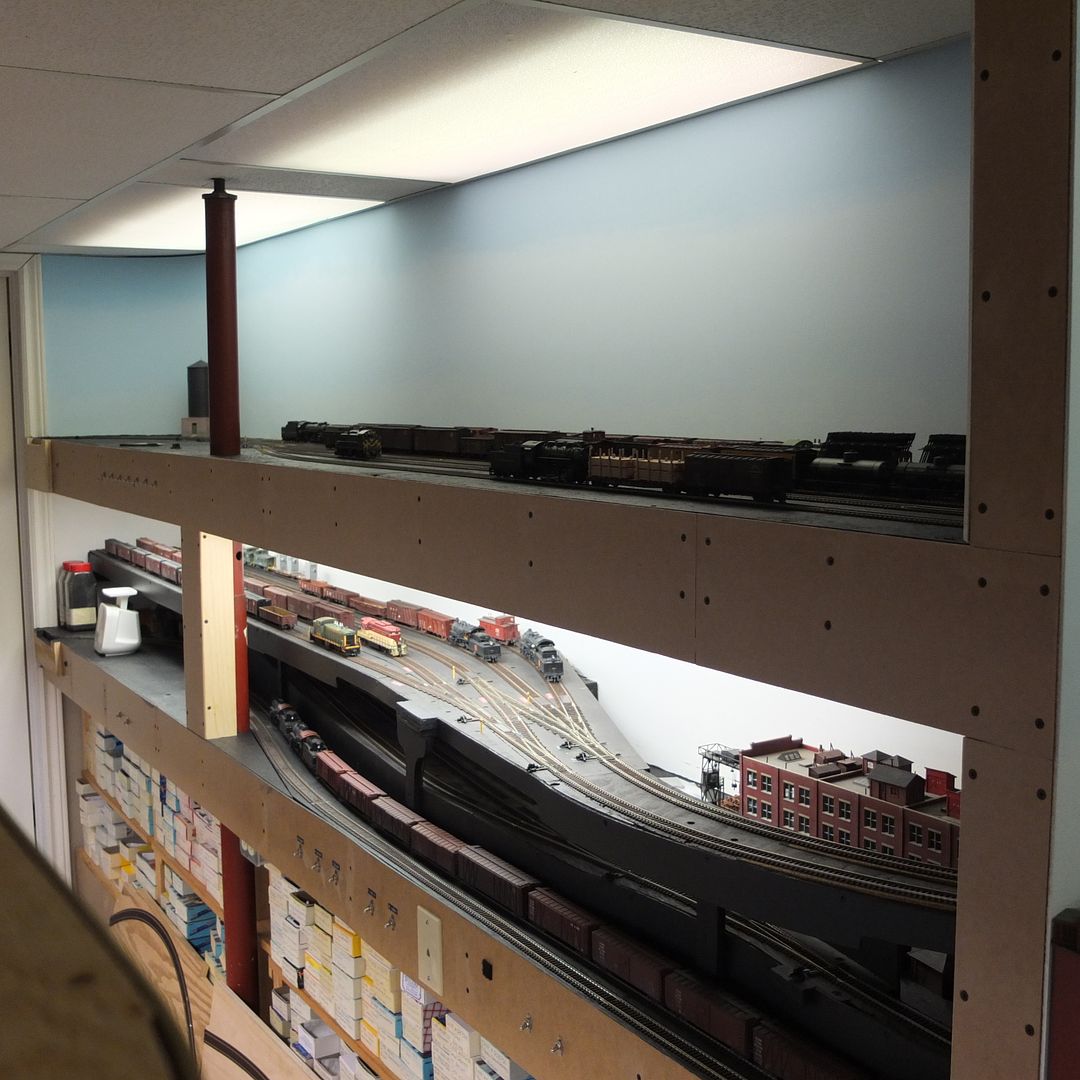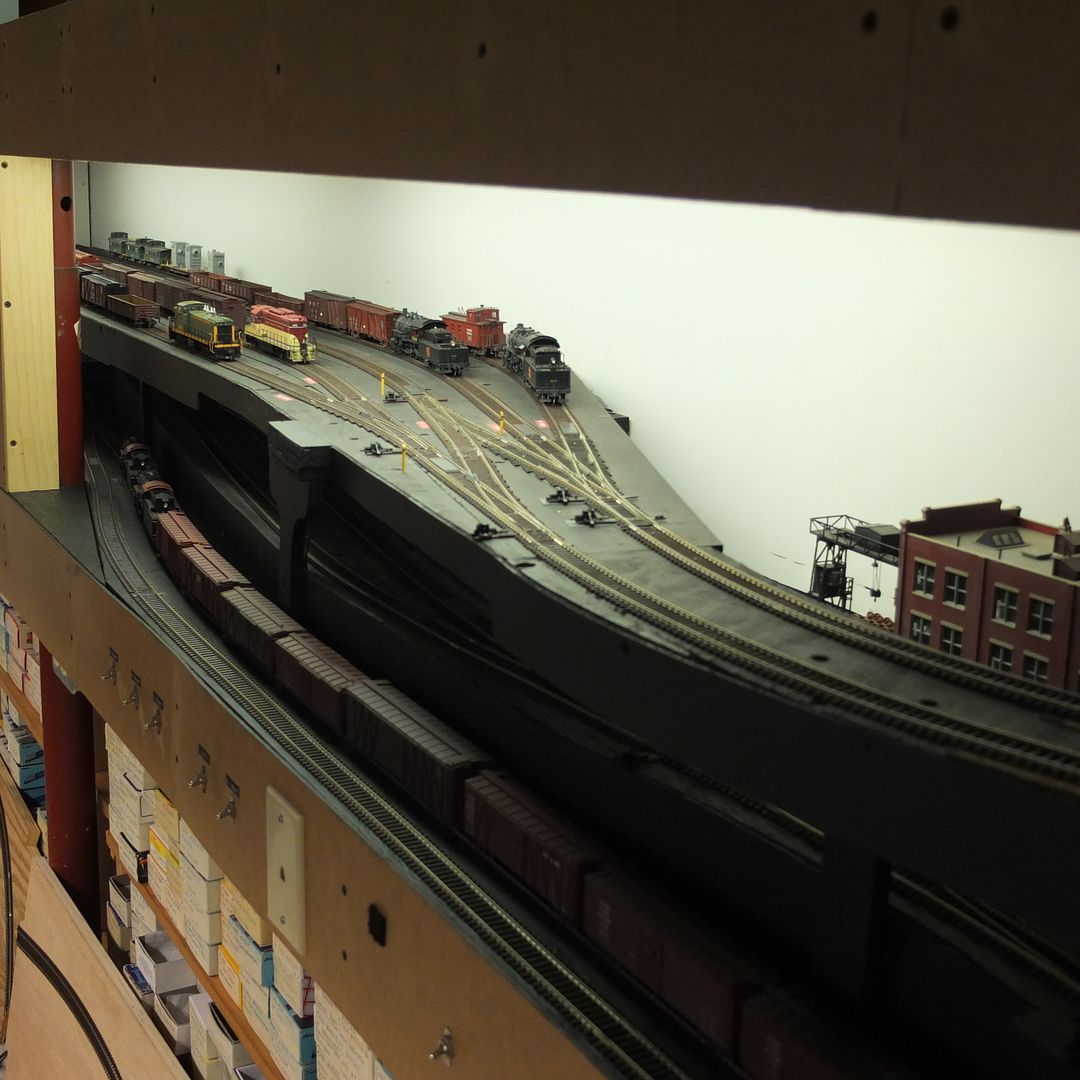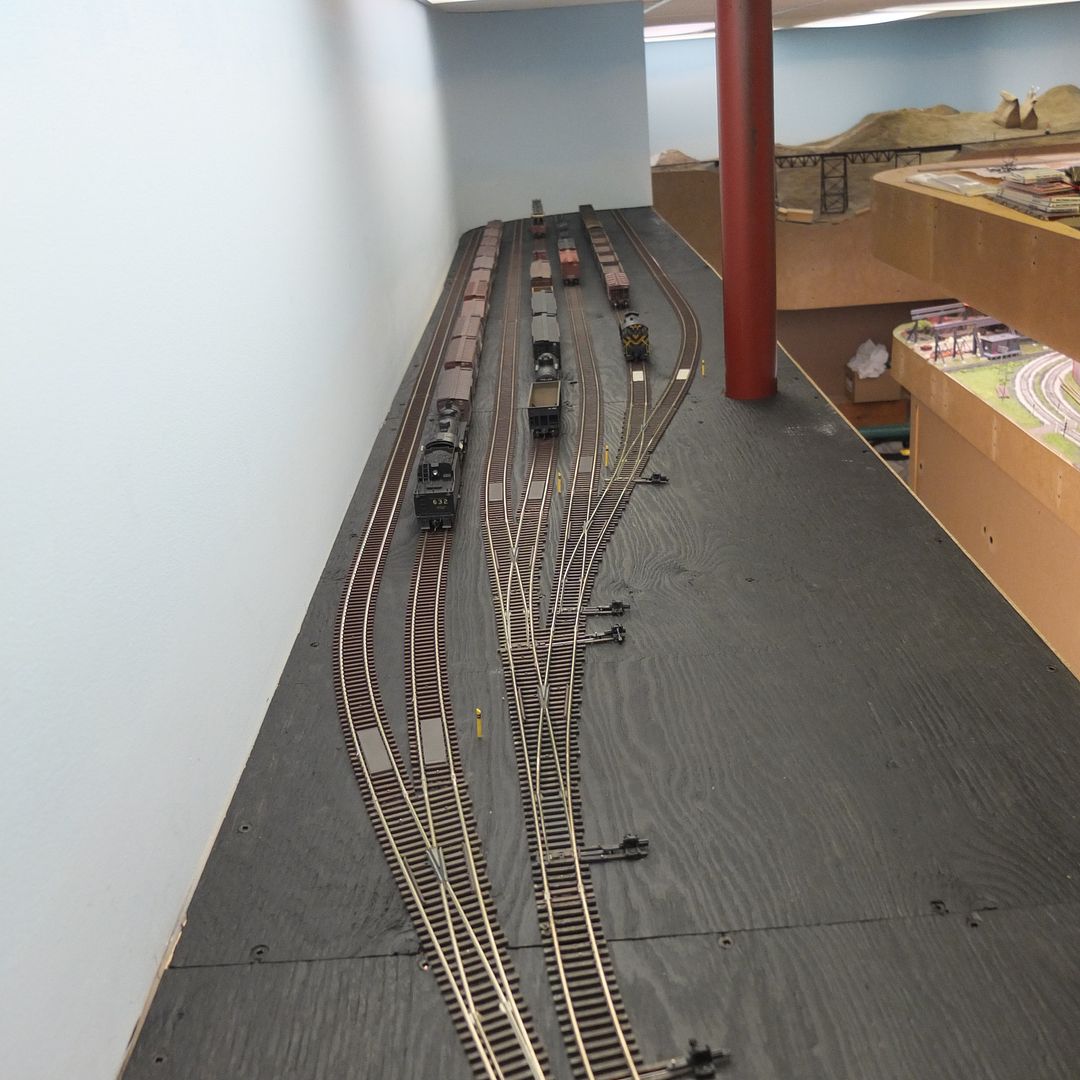Have those who have done this had any issues with seams? I’m thinking the 1-foot squares would be easier to install since they come flat rather than rolled up and smaller pieces are less trouble when using contact cement. The only downside I can think of is the seams.
I installed several sheets of 11 3/4" x 36" Midwest Cork in my old club’s yard and had no problems with seams in the cork. It was laid on 3/4" plywood. The joints between the plywood sheets were smooth.
I would suggest using carpenters glue instead of contact cement because the sheets can be adjusted to get a perfect fit. I would also suggest using a wallpaper roller to smooth the sheets out (works on roadbed too).
Dave
I used rolled cork sheet in my yard, IIRC it was N scale, so thinner than the HO roadbed cork. I secured it with Alex latex caulk as I did my roadbed cork. The seams just show but are no issue if you ballast, which evens things out.
 20200611_152505 by Paul Ahrens, on Flickr
20200611_152505 by Paul Ahrens, on Flickr
All of my “yards” are staging, so no need for cork underlay of any type, and no need for ballast, either…



There’s also a fifth one, in another room. It’s only two tracks, on a narrow shelf, and is unpainted. I used black paint on the ones in the layout room simply to demarcate them as “off-layout”.
Wayne
What does the cork sheet provide that you can’t get from cork strips?
I wanted a flat yard, not a yard where only the tracks were elevated. That doesn’t look right.
I used WS foam roadbed sheets, which were easy to fasten down and worked well, but it’s the same idea as cork sheets.
Like MisterBeasley I wanted a flat yard with no ballast profile and using sheet cork instead of strips elimanated having to fill between tracks.
Regards, Peter

I layed out my yard track and tried several different things. I decided I wanted to run things a while before I made up my mind, so I laid down cork sheets, and moved my track and turnouts several times.
I know – I could have done the same thing without the cork, but for some reason it seemed to be a little easier than moving cork strips each time.
I used cheap caulk to glue the cork to the plywood.
I bought sheets of cork from Hobby Lobby for pretty cheap. I think I got a 16" x 48" roll for less than $5.00.
Cork sheets in yards here, too. No problem with seams (after all there is one seam in regular cork roadbed right down the middle with no problems) BUT I do use one of the large spongy abrasive pads on the cork that smooths things out and I assume would address slight seam issues.
Dave Nelson
I used N scale cork roadbed under my yard tracks (I model in HO). Then I went back and filled in between the tracks with more N scale roadbed. That was an expensive way to do it. Live and learn.
On an ealier layout I used cork flooring underlayment. Came in a huge roll for a pretty reasonable price (delivered to my home). I must have gone stupid between then and now.
I’d think the transition between HO and N scale is something difficult for ensuing continual movement. Perhaps some can offer suggestions on going from one to the other easily. I keep all the cork the same height.
Maybe I’m as thick as two short planks, but why use cork at all?
Just lay the yard track directly to the base, then transition your leads to the cork under your main line. Seems to be simpler and far less expensive, but then I am a simple Bear.
[:)]
keep the noise down
Having once worked next to a railway yard, I thought they were noisy places!
Besides, on slow speed switching operations, does cork really make a worthwhile difference?
Just my [2c] and I must admit to partial deafness.
Cheers, the Bear.[:)]
I’m using HO scale cork sheets in my service yard simply because the transitions to N scale cork or no cork would be too steep. In one case the first turnout in the yard has only about 6" of track between it and the turnout that feeds it. I know I could probably get away with N scale cork in the yard, but I would rather have reliable operation than the tiny bit of perspective that the transition would create.
Dave
Ah but the yard in question, in this case, is a ~hidden staging yard so any noise would be quite offensive.

As you have considered that the seams could cause problems, I rather suspect that you will give them extra attention, therefore negating any possible problems, giving you a trouble free quiet yard.
[:)]
I am finally ready to start laying track for my yard. I just ordered 10 sheets of HO midwest cork sheet.
The package was pretty heavy, I’ve never got so much cork at one time. LOL
I apologize for being late to this party, I’m in serious catch up mode with reading these forums. Just a quick observation, no one has mentioned using homasote for their yard. No seams, very flat, takes track spikes well, paintable and takes ballasting well.
Homsote, yes. I was going to mention it but you beat me to it. Sometimes you have to level it a bit, but I’ve used Homasote on all my layouts for yards and still do. I paint it first to give it a base color and seal it a bit.
Indeed it takes spikes and track nails well. No worries about ramping up or down.
If I need to make a transition from Homasote to cork road bed at the change to mainline I simply mount the subroadbed so the surface of the cork is flush with the surface of the Homasote.
I ran on my last layout and there didn’t seem to be any noticable noise either.
